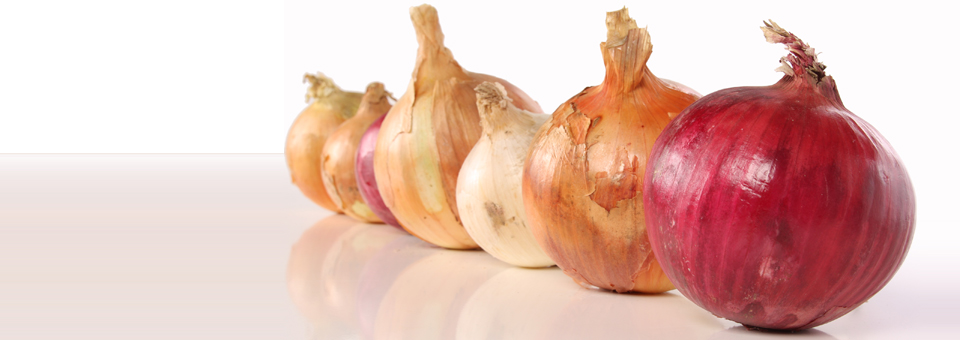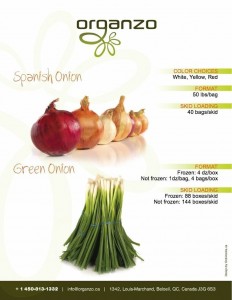Spanish onion
Introduction
The Spanish onion is considered to be one of the oldest farmed root vegetables and also one of the most used in cooking as a condiment and raw vegetable. It also possesses several medicinal properties.
The Spanish onion is a large and very juicy onion (at least 3 inches) with a very mild and sweet flavour. It is the largest of the onions, it is round and white, yellow or red.
As with all onions, the Spanish onion is comprised of a coloured layer which varies with the season, followed by several concentric layers (peel) closed around a sprout.
The Spanish onion is very nutritious and it has many benefits for the body including a bacteriostatic effect (hence its use in marinades) and a beneficial effect on the cardio-vascular system. We can describe it as a diuretic, antibiotic, antiscorbutic and stimulant.
The onion, rich in sulphur, can be hard for fragile intestines to tolerate, especially when eaten raw.
Organzo: a strategic and authentic partnership between truck farmers and our agronomic services department, from seed to harvest.
We constantly suggest new varieties to improve product qualityand options for seeds that are less prone to ravagers, diseases and physiological disorders.
We walk through the producers’ fields every week looking at and inspecting the slightest defaults in plants, in order to delay any outbreak of ravagers and/or diseases by applying good agricultural practices, and when needed, by rationally using registered pesticides.
Selection and preservation
Choose a firm onion that is shiny and has dry, breakable, bruise-free peel, with no sprout and no bruises.
Keep it away from any humidity to prevent the layers under the peel from disintegrating faster.
These onions keep for several months in a dry, aerated, fresh and dark place.
Don’t store the onions near to potatoes as they can absorb the moisture released by the potatoes.
In the fridge: place them in the vegetable compartment and reduce the humidity level to a minimum, but try not to leave them for too long in the fridge as the smell can transfer to other foods.
In the freezer: blanching the onions beforehand means you can keep them longer. We can use them in the same way as fresh onions.
Cooking instructions
Onions are aromatics used all over the world as a natural flavour enhancer.
The Spanish onion has a taste that is much milder than the yellow onion so it is often eaten raw. But it is also used for cooking and to make the base for sauces.
The choice of onion depends on its intended use. Red onion is best when eaten raw (in a garnish or salad), while the yellow and white varieties are used in cooked dishes.
We can use it raw or cooked (as the base for typical dishes and soups) or in stews, omelettes, doughnuts, baked (stuffed, gratined or confit), on the BBQ (cut in rounds or on a kebab) or even in marinades.
You need to know:
-
A cut onion that is left to sit for a short time (even in the fridge) becomes noxious: it oxidises, loses its vitamins quickly and attracts microbes.
- To avoid crying when preparing onions: cut the onion in two and soak in salted water.


